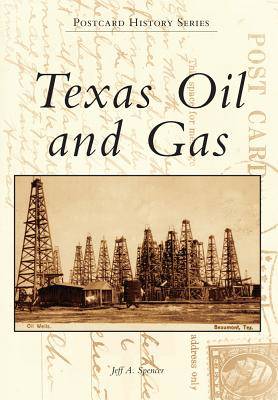
- Afhalen na 1 uur in een winkel met voorraad
- Gratis thuislevering in België vanaf € 30
- Ruim aanbod met 7 miljoen producten
- Afhalen na 1 uur in een winkel met voorraad
- Gratis thuislevering in België vanaf € 30
- Ruim aanbod met 7 miljoen producten
Zoeken
Omschrijving
Texas Oil and Gas documents in postcards the rapid growth of the Texas petroleum industry from its beginnings near Corsicana in the 1890s through the next several decades of oil booms throughout the state. The young 20th century opened with the Lucas Gusher at Spindletop in 1901. Thousands rushed from the oilfields of Pennsylvania, Ohio, and West Virginia to find work and riches. Continued drilling success along the Texas Gulf Coast transformed Houston into a major city and the Beaumont area into a major petrochemical center. Through the 1910s and 1920s, oil booms occurred in North Texas, the Panhandle, Central Texas, and West Texas. The giant East Texas oilfield, the second largest North American oilfield to Alaska's North Slope, was discovered in 1930. Texas oil replaced coal as fuel for the nation's railroads and provided fuel for our military in two world wars.
Specificaties
Betrokkenen
- Auteur(s):
- Uitgeverij:
Inhoud
- Aantal bladzijden:
- 128
- Taal:
- Engels
- Reeks:
Eigenschappen
- Productcode (EAN):
- 9781467130219
- Verschijningsdatum:
- 16/09/2013
- Uitvoering:
- Paperback
- Formaat:
- Trade paperback (VS)
- Afmetingen:
- 163 mm x 231 mm
- Gewicht:
- 294 g

Alleen bij Standaard Boekhandel
+ 61 punten op je klantenkaart van Standaard Boekhandel
Beoordelingen
We publiceren alleen reviews die voldoen aan de voorwaarden voor reviews. Bekijk onze voorwaarden voor reviews.











